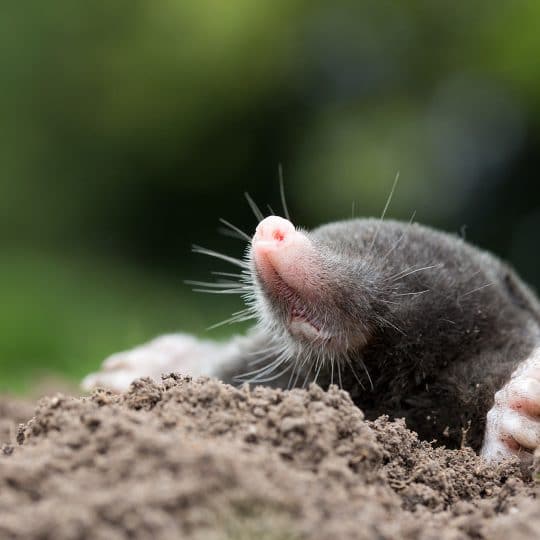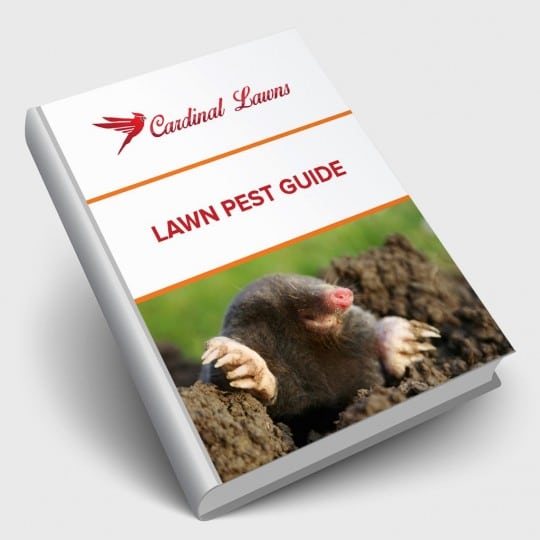5 Mole Control Techniques
Plus Prevention Methods
Posted
October 27, 2022

You’re not the only one who may be enjoying the cooler temperatures and lush yard. Moles are more active in the spring and fall since the ground is moist and easier to dig through. There are ways to make your lawn less desirable to these burrowing pests. Learn more about mole control techniques to get back to enjoying what’s left of the warmer weather.
Identifying Moles
Since moles burrow, feed, and move around underground, they’re typically harder to spot. However, you’re likely to see the mounds of soil they create to get in and around their homes. While they’re more interested in the insects in the soil, their method of burrowing is what could destroy your yard and garden.
Depending on the condition of the soil in your yard, a mole can dive deep enough that you won’t see its tunnel tracks. However, you may notice the dirt they kick up when entering and exiting these underground structures. Even if you see multiple mounds, it may only be one mole.
If you catch a glimpse of them, you’ll see a small, dark, potato-shaped hairless body, pink snout, webbed feet, and long claws. They can often be mistaken for other underground pests, like mouse-sized voles, and there are many different species of mole that range in size and coloring.
Since voles, gophers, and groundhogs also burrow underground, noticing a mound may be a sign of any of these creatures. The real test is to check your vegetation. Since moles only eat insects and spend most of their time underground, if you notice a lot of plant damage, it could be another pest altogether.
If a mole does take up residence in your yard, it’s likely because they have enough open space to tunnel and you have a wide variety of insects to dine on. Once you get the mole population under control, you’ll want to also look into the additional pest problem to prevent them from returning.
Mole Control Techniques
Once you’ve determined it is a mole you’re dealing with, you can start planning your attack. Mole control is more of a long-term strategy than a quick fix. You’ll want to be sure you catch and remove the mole before trying to repair any damage done by the tunnels. There are ways to do this yourself, but it’s also easier with the help of a pest control pro.
- Create a barrier. One way to help protect your plants is to put up barriers. A fence isn’t going to keep moles out, since they can simply dig underneath it. But a wire mesh barrier buried around your garden will discourage them from digging underneath that and tearing up the roots.
- Improve drainage. Since moles prefer moist soil, make sure your lawn is properly drained so it’s not as easy to tunnel through.
- Repellants. There are liquid and granular repellents available for use in and around mole mounds. However, these products should be used with caution as they can cause existing moles to attempt to dig deeper in their trail to escape the smell, smoke, or other repellants.
- Traps. Placed in the mole tunnel, these products are designed to kill or catch moles alive for release back into the wild. Check with local authorities before attempting this method as some areas have laws against pest catch and release.
- Control formulas. There are insecticides you can use to deal with any insect issue. Once this is under control you may find fewer moles in the area since you eliminated their food source. Some baits and poisons target the mole directly. Some come in the form of fake insects. Poisons are not recommended for use if there are pets or other wildlife in the area.
Professional Mole Control Techniques
If you’re having trouble pinpointing the pest problem, it’s best to call a professional pest control company before wasting money fixing the wrong issue. You can also get ahead of any future issues with the right plan.
Contact Cardinal Lawns for help controlling moles, insects, or any other lawn pest. Once the job is complete, you’ll also have a plan for preventing additional issues in the future.

Download Your FREE Lawn Pest Guide
Pests become most prevalent during the heat and humidity of summer. Take some time to learn about the signs of infestations before any damage can be caused to your landscape. This handy guide will teach you how to spot common lawn pests and how to keep them from causing harm to you and your property.